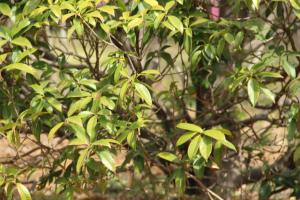How Well Does a Tree Stump Work for a Planter?
After removing an old tree from your yard, you may be left with a tree stump taking up valuable space. However, a creative solution to this problem is to turn the stump into a planter for your garden. Not only does this provide a unique and rustic addition to your yard, but it also allows you to grow plants in an area that may not have been previously usable. But just how well does a tree stump work as a planter?
The Benefits of Using a Tree Stump as a Planter
One of the great advantages of using a tree stump as a planter is its natural drainage system. When you drill a few drainage holes into the base of the stump, the soil is able to drain excess water easily. This can be particularly beneficial in high-rainfall areas or if you tend to overwater your plants. Additionally, the natural decomposition of the stump over time can provide nutrients to your plants, acting as an organic fertilizer.
Another benefit of using a tree stump planter is its aesthetic appeal. The unique and rustic look of a tree stump planter can add a touch of charm to your yard or garden. This naturalistic feature can also blend seamlessly with the surrounding landscaping, making it a low-maintenance yet eye-catching addition to your outdoor space.
Choosing the Right Stump for Your Planter
Not all tree stumps are equal when it comes to being used as a planter. The first thing to consider when selecting a stump is its size. A large stump may provide the adequate space for a wide range of plants, but it may also be difficult to move and can require extensive drilling to accommodate for drainage holes. Conversely, a smaller stump may be more manageable but may not be able to hold as many plants or require frequent watering.
The type of tree stump you use can also impact the success of your planter. Certain types of wood, such as oak or cedar, have natural rot resistance properties and may last longer as a planter. Avoid using stumps from trees that are known to be prone to rotting, such as a willow tree, as they may not be able to withstand the prolonged exposure to moisture.
Preparing Your Stump Planter
Before using your stump as a planter, it is important to properly prepare it to ensure optimal growing conditions for your plants. The first step is to drill drainage holes, about half an inch in diameter, in the base of the stump to allow excess water to drain out. Next, remove any loose or decaying wood on the surface of the stump, being cautious not to damage the integrity of the stump. Finally, add a layer of potting soil to the stump and fill it with the desired plants.
Keep in mind that as the stump decomposes over time, it may require additional soil to be added to maintain the proper depth for your plants' roots. Additionally, you may need to periodically replace plants or move them to larger stumps as they outgrow the space.
The Verdict: Using a Tree Stump as a Planter Can Be a Great Addition to Your Garden
Overall, using a tree stump as a planter can be a unique, rustic, and sustainable way to add life to your yard or garden. With proper preparation and care, a tree stump can serve as a beautiful and functional planter for a variety of plants. The natural drainage and nutrient properties of the stump, combined with its aesthetic appeal, make it a popular choice for gardeners looking to repurpose an old tree stump.

 how many times do yo...
how many times do yo... how many planted tre...
how many planted tre... how many pine trees ...
how many pine trees ... how many pecan trees...
how many pecan trees... how many plants comp...
how many plants comp... how many plants can ...
how many plants can ... how many plants and ...
how many plants and ... how many pepper plan...
how many pepper plan...





























